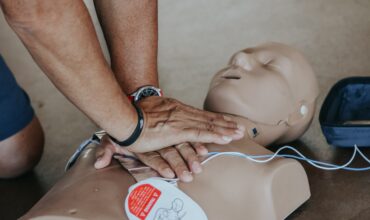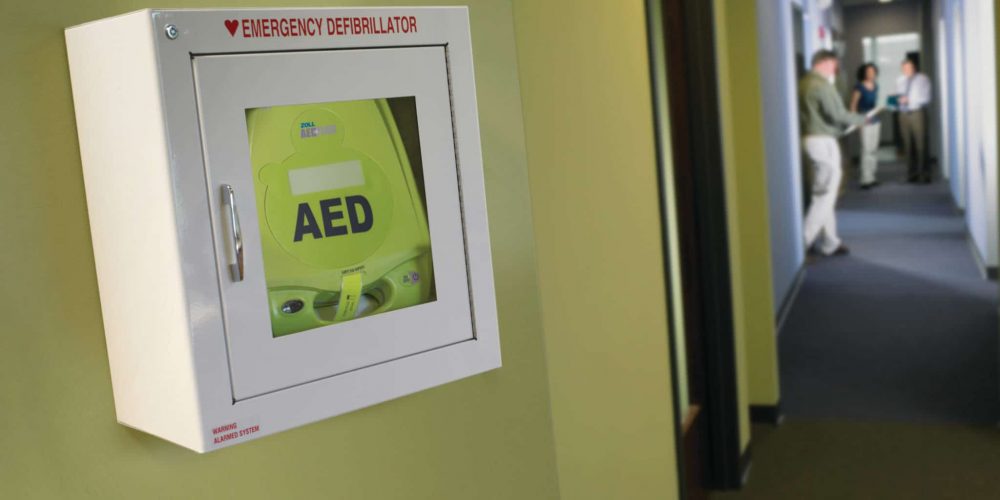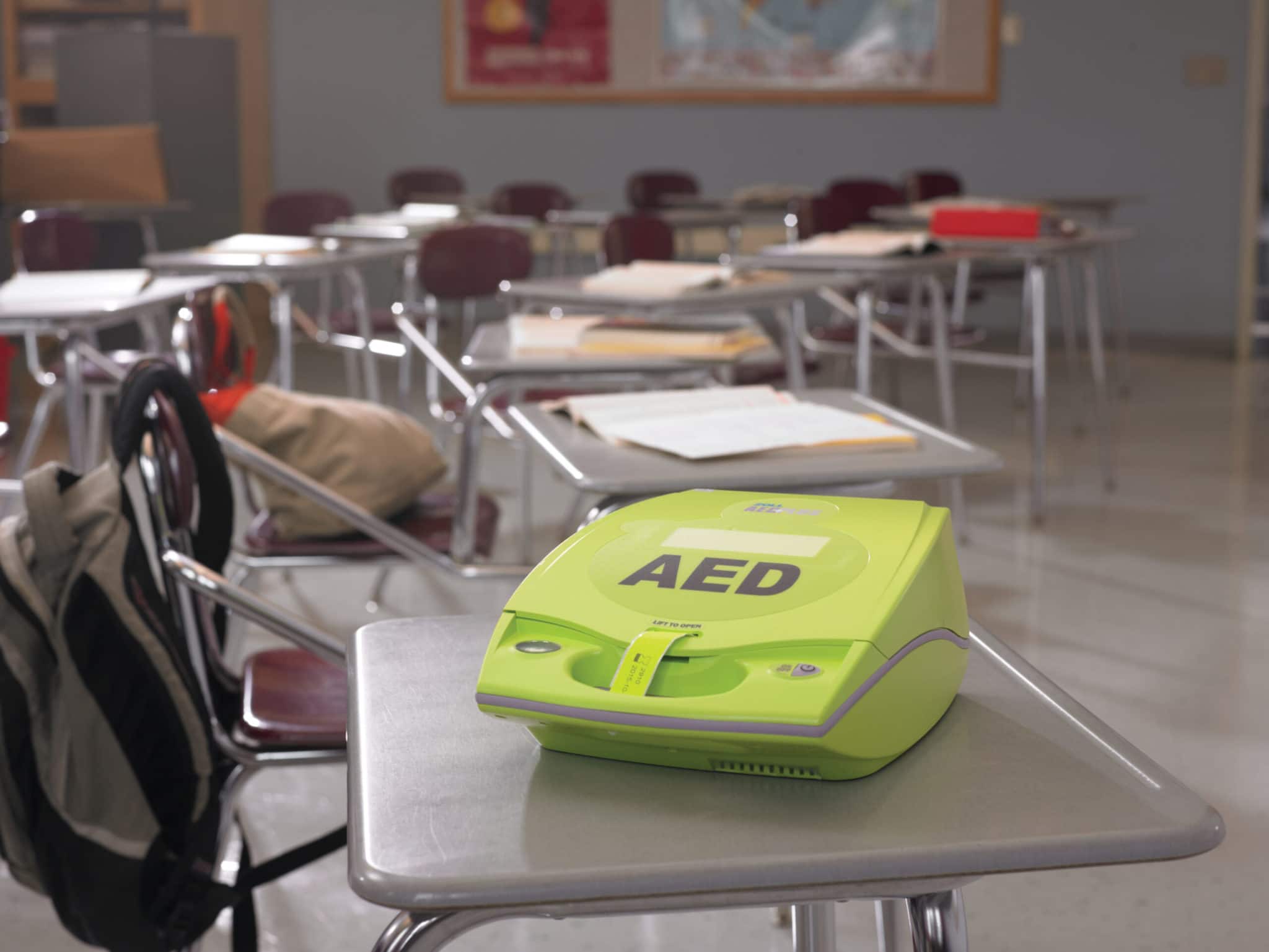- Your cart is empty
- Continue Shopping


An AED (automated external defibrillator) is a portable device that is used to treat sudden cardiac arrest. It is a type of medical equipment that can be used by trained laypersons to provide life-saving care in an emergency.
It is designed to automatically diagnose the potentially life-threatening cardiac arrhythmias of ventricular fibrillation and ventricular tachycardia in a patient, and to treat them through defibrillation, the application of electrical therapy which stops the arrhythmia, allowing the heart to reestablish an effective rhythm.
AEDs are often found in public places, such as airports, schools, and shopping malls, and are also carried by many emergency medical services.
AEDs should be located in easily accessible and visible locations where they can be quickly retrieved in the event of a sudden cardiac arrest. This may include prominent locations within public buildings, such as near entrances or in lobbies, as well as outdoor locations such as near sports fields or playgrounds.
These devices should be clearly marked and labeled, and the location of the AEDs should be clearly indicated on building plans and maps. It is also important to make sure that trained personnel are aware of the location of the AEDs and know how to use them properly in an emergency.

Many schools have decided to purchase and maintain AEDs on their premises in order to be prepared for such an emergency.
The placement of portable AEDs in schools is often determined by state and local laws and regulations. In general, AEDs should be located in easily accessible and visible locations within the school, such as near entrances or in the main office. It is also important to make sure that the AEDs are properly maintained and that school staff are trained in how to use them.
By having AEDs on hand and making sure that they are readily available, schools can help to ensure that they are prepared to provide life-saving care in the event of a sudden cardiac arrest.
The workplace is one of the more common areas Sudden Cardiac Arrest occurs. As a result, many safety managers are beginning to include AEDs on their ‘must-have’ safety equipment list for the office, warehouse or workplace at large.
By having AEDs on hand and making sure that employees are trained in how to use them, workplaces can help to improve the chances of survival for individuals who experience SCA.
It is important for workplaces to have an emergency response plan in place that includes the use of AEDs and to make sure that the location of the AEDs is clearly marked and known to all employees.
If you are unsure about whether to purchase an AED for your office, it is best to consult with a healthcare provider or an official AED distributor for guidance.
Whether a church should have an AED is ultimately a decision for the church leadership and community to make.
AEDs can be an important tool for providing life-saving care in the event of a sudden cardiac arrest, and having one on hand can help to ensure that the church is prepared to provide this care in an emergency.
However, purchasing and maintaining an AED can be a significant financial and logistical investment, and not all churches may have the resources or need to do so.
If a church does decide to purchase an AED, it is important to make sure that the device is properly maintained and that church staff and volunteers are trained in how to use it. The church should also develop an emergency response plan that includes the use of the AED and make sure that the location of the AED is clearly marked and known to all staff and volunteers.
There is no one-size-fits-all answer to how many AEDs (automated external defibrillators) should be in a building.
The appropriate number of AEDs will depend on the size and layout of the building, as well as the number of people who may be present at any given time.
In general, it is recommended that AEDs be located in easily accessible and visible locations throughout the building, such as near entrances and in areas where large groups of people may congregate, such as lobbies or auditoriums.
It is also important to make sure that the AEDs are properly maintained and that building staff and occupants are trained in how to use them.
If you are unsure about how many AEDs your building should have, it is best to consult with a healthcare provider or AED vendor for guidance.
For more information, consult our placement guide or reach out to us for further assistance
The survival rate for sudden cardiac arrest (SCA) varies depending on several factors, such as the age and overall health of the individual, the cause of the SCA, and the availability and timeliness of medical treatment.
In general, the survival rate for SCA is low, with less than 10% of individuals surviving without immediate medical intervention.
However, when SCA is treated promptly with CPR (cardiopulmonary resuscitation) and defibrillation (the application of electrical therapy to the heart), the survival rate can be significantly higher.
For example, one study found that the survival rate for SCA was 31.4% when CPR and defibrillation were provided within 5 minutes of the onset of symptoms.
This emphasizes the importance of having access to AEDs (automated external defibrillators) and trained personnel in the event of a sudden cardiac arrest.
The cost of an AED (automated external defibrillator) can vary depending on the specific model and features of the device. AEDs can range in price from several hundred dollars to over a thousand dollars.
In addition to the cost of the AED itself, there are also ongoing costs associated with maintaining and replacing the device, such as the cost of batteries and electrode pads.
It is important to carefully consider the costs and benefits of purchasing an AED and to consult with an AED vendor or healthcare provider to determine the best option for your needs and budget.
Implementation Guide